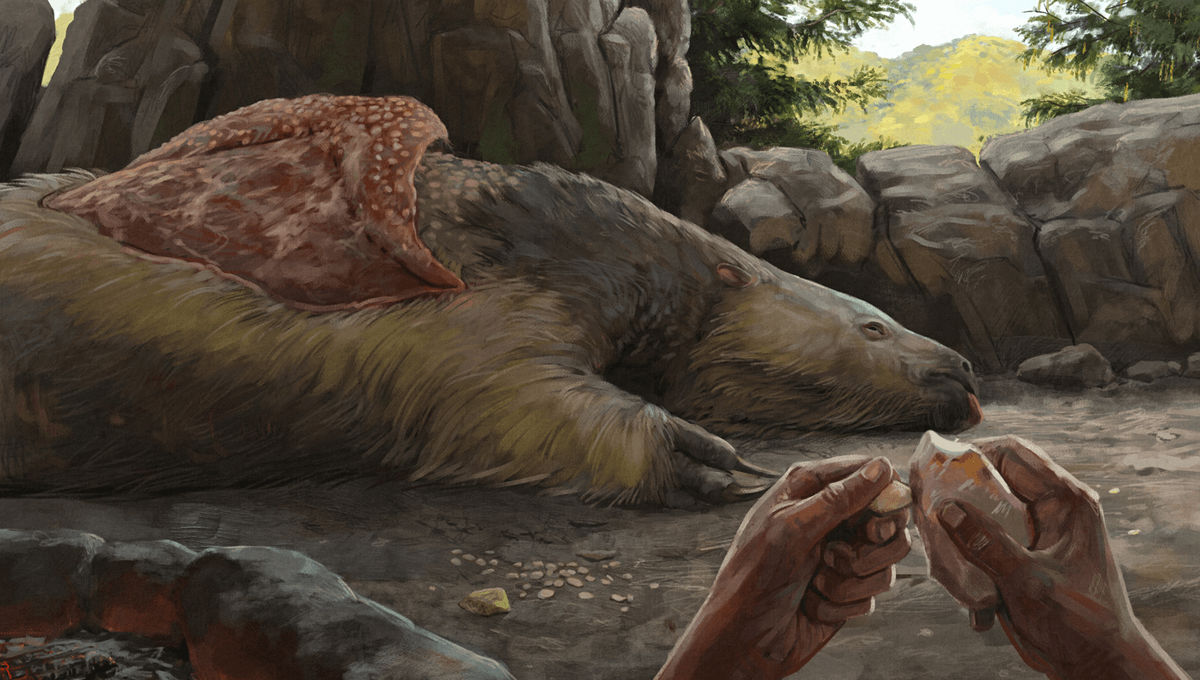
The must-have accessory for fashionistas living in Ice Age South America was a polished pendant carved from giant sloth bone, it seems. Archaeologists have recently found artifacts made of giant sloth bones in central Brazil that date to over 25,000 years old, providing evidence that humans arrived in the Americas way earlier than once thought.
The artifacts were discovered at the Santa Elina rock shelter in Central Brazil, known for its beautiful collection of rock art. Among the relics discovered in the cave, researchers have identified remains of the extinct giant ground sloth, including thousands of osteoderms, the hard bony deposits that form an armor-like layer on the skin of certain animals.
At least three of the osteoderms showed signs of being modified by humans, such as a smooth polished surface and neatly formed holes that were clearly drilled. Judging by the shape and size of the crafted artifacts, the researchers concluded that they were most likely “personal ornaments” like a necklace pendant.
“Among the thousands of fossil osteoderms on the site, the perforated and polished state of the three osteoderms studied here is exceptional,” the study authors write.
“These observations show that these three osteoderms were modified by humans into artefacts, probably personal ornaments,” they later added.
The dating of the sloth bone jewelry is particularly mind-blowing. The objects were discovered in a layer of the cave’s dirt that dates to around 25,000 to 27,000 years ago.
This provides further good evidence that humans were wandering around the Americas at the same time as the extinct giant ground sloth (Glossotherium phoenesis). These colossal beasts were almost the size of an elephant, measuring up to 4 meters (13.1 feet) in length and possibly weighing up to 1,500 kilograms (3,306 pounds). Like many other megafauna of the Pleistocene, it looks like they were widely hunted by humans despite their impressive stature.
Furthermore, 25,000-year-old evidence of humans in the Americas is remarkably old. Until recently, the commonly held view among researchers was that the earliest inhabitants in the Americas were a single group known as the “Clovis culture” that settled in the continent around 15,000-13,000 years ago after crossing from Eurasia. However, that date has been continually pushed back by a number of archaeological finds in the past few decades.
The sloth bone pendant is more hard evidence that humans made the daring journey across to America much earlier than many experts previously thought.
The study is published in Proceedings of the Royal Society B.
Source Link: Humans Made Giant Sloth Bone Jewelry Over 25,000 Years Ago In Brazil